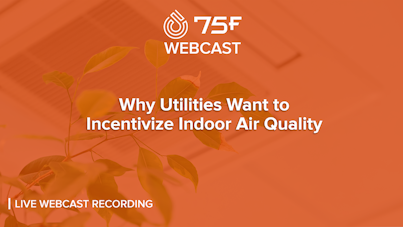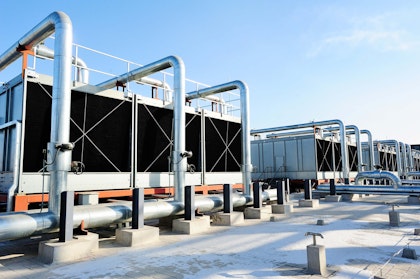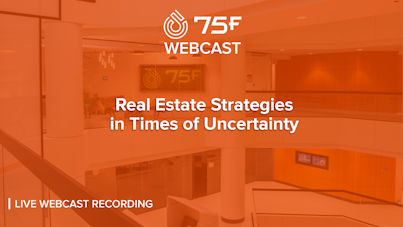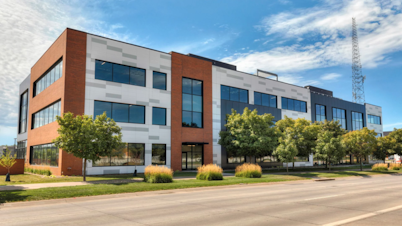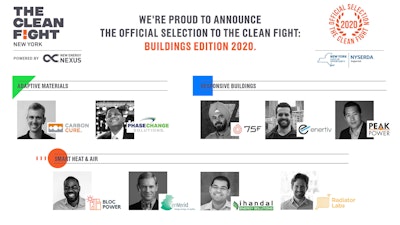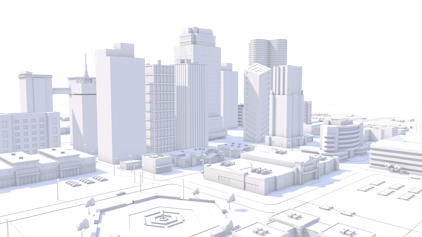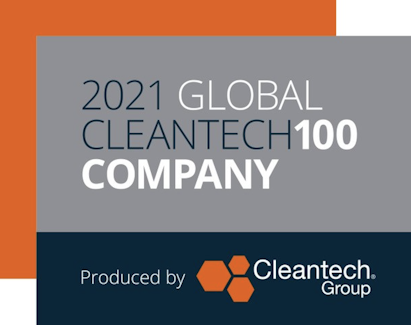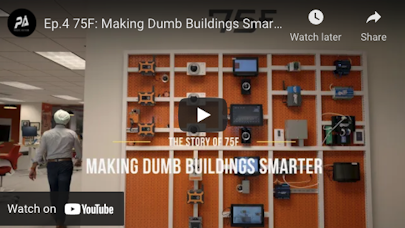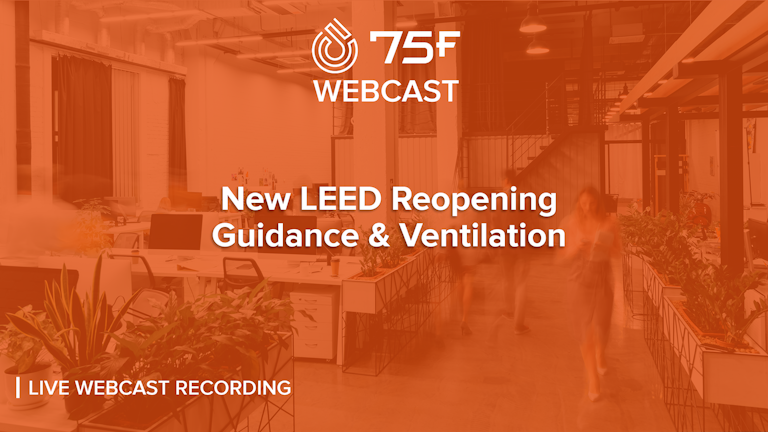
Healthier Buildings Series: New LEED Reopening Guidance and Ventilation
75F's latest Healthier Buildings webcast session pulls on expertise from the U.S. Green Building Council (USGBC) and Arc Skoru, Inc. to help viewers better understand what they should consider when reopening their facilities.
Hosts are 75F's founder and CEO, Deepinder Singh; VP of LEED Technical Development at USGBC, Corey Enck; and Chris Pyke, Senior VP for Product at Arc Skoru, Inc. Hosts discuss specific strategies building owners can take to make their spaces safer, including new LEED guidance and Arc Re-Entry for operating during a pandemic.
This was a live, recorded webcast. If you'd rather view the PDF copy of presentation slides, click here. Continue reading for a recap of main points covered in this session.
Our previous Healthier Buildings webcast recaps include detailed descriptions of outdoor air ventilation guidelines from the Centers for Disease Control and Prevention (CDC) and the American Society for Heating, Refrigerating, and Air-conditioning Engineers (ASHRAE). If unfamiliar with these guidelines, you can reference the recaps for context.
LEED Guidance for Reopening
There are a few existing strategies within LEED that facility managers can reference for recovery and preparedness during a pandemic, Enck points out, including credits for fundamental recommissioning and verification.
However, as COVID-19 continues, LEED developers have created pilot credits specifically for building operation during a pandemic. Called Safety First pilot credits, this guidance breaks down steps for mitigation strategies that can help building owners prepare their space for reopening and help garner occupant trust.
"This is something a project team or an owner can use to show that they are taking steps to make a safer indoor environment for their occupants," Enck says of the pilot credits.
Safety First pilot credits cover four categories:
Re-entering your workplace.
Cleaning and disinfecting your space.
Building water system recommissioning.
Managing Indoor Air Quality (IAQ) during COVID-19.
An important mindset to have regarding the last credit is to assume that infected people will be inside your building, Enck says. With this in mind, upgrading and verifying your building's ventilation when operating during a pandemic is crucial.
Beyond following recommendations from the CDC and ASHRAE — included in the IAQ pilot credit —additional requirements include identifying mechanisms for monitoring and evaluating IAQ; updating facilities and operations requirements as necessary to include how IAQ will be managed during a pandemic; and using third-party tested devices if taking air treatment measures.
While increased outdoor air ventilation is an important strategy to implement when reopening your facility, enforcing masks indoors is still vital to a safer space.
Arc Re-Entry
Arc, which is affiliated with USGBC and provides scores for LEED certifications, is responding to the COVID-19 pandemic with what Pyke calls an iterative management process.
Arc Re-Entry is not a one-off certification or score, but rather a rolling process that measures occupant experience against facility management intent, Pyke explains. This breaks down into three essential elements:
Transparent facility management.
Interaction with occupants.
Measured indoor air quality.
Transparency is key in the first step — that means creating and maintaining infection control plans, policies and procedures that are aligned with relevant public health authorities. These plans and policies should break down what exactly management is doing, how they're doing it, and what the expectation is for the occupant experience.
When interacting with occupants, the important question is whether they're experiencing the intent of management strategies. If building owners say they are going to enforce social distancing, does this line up with occupants' daily reality?
Finally, measuring indoor air quality is now going to require more than traditional practice, Pyke says: "The idea that we need daily or hourly information on indoor air quality has become crystal clear."
Arc Re-Entry encourages participants to move to higher levels of data coverage, including monitoring more data points across more of their building. The program lays out four elements that work as proxies for management during a pandemic, including relative humidity as a proxy for disease transmission and susceptibility; CO2 for ventilation; TVOC for indoor pollutants; and particulate matter for HVAC operation.
Building Automation and Pandemic Management
Building automation is powerfully positioned to help owners and facility managers implement strategies such as those discussed in this webcast. For example, modern technology allows out-of-the-box sensing capabilities in one device that can deliver data from each zone in a building rather than having to install individual devices for CO2, humidity, and more.
75F's Epidemic Mode is another timely example of how building intelligence can help: Our system automates CDC and ASHRAE guidelines for outdoor air ventilation in a space, and can update over the cloud as recommendations evolve. Implementing Epidemic Mode or disabling it after a pandemic ends is as easy as logging into Facilisight — 75F's building intelligence suite of web and mobile apps — and toggling an "on" and "off" switch.
Q and A
Viewers are asking valuable questions at every Healthier Buildings session. We've compiled a few questions — and our answers — from this session below.
"No mention of UV lighting as a strategy?" — David
Studies show the effectiveness of UV lighting against COVID-19 particles is based on not just temperature and humidity, but light intensity and duration, or dwell time. This is the amount of time a particle is exposed to UV lights.
UV treatment is typically located in the return, and therefore, depends on contaminated air to go up into the return. By definition, this is a small portion of the air in the space.
"For a dental surgery, should we have positive or negative pressure?" — Saranjit
In hospitals, single-patient rooms are kept at negative pressure relative to surroundings with six air changes per hour. Dental exam suites should be similar to keep potential contaminants from other rooms.
"How does all of this integrate with existing leases in buildings?" — Daniel
Some of our customers have a lease for over a few years duration, and have made the determination that they can’t afford to wait. Occupants in a leased space can take charge of strategies like social distancing and wearing masks. If facility operation is out of your hands, get in touch with your building owner to find out what they're doing to keep their facility safe.


